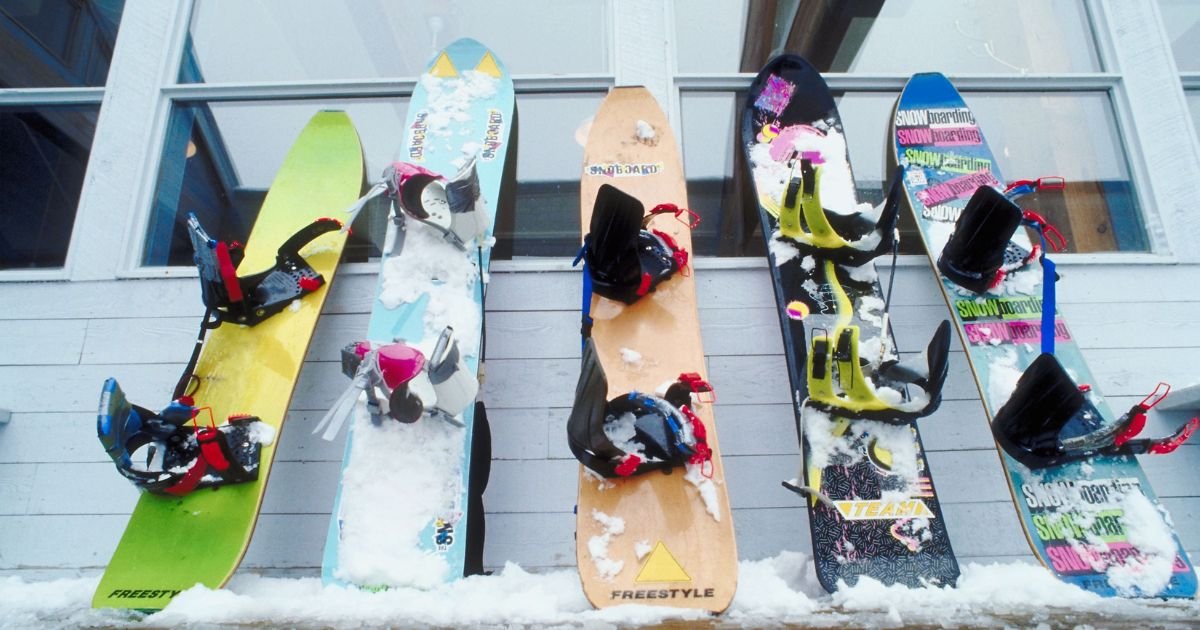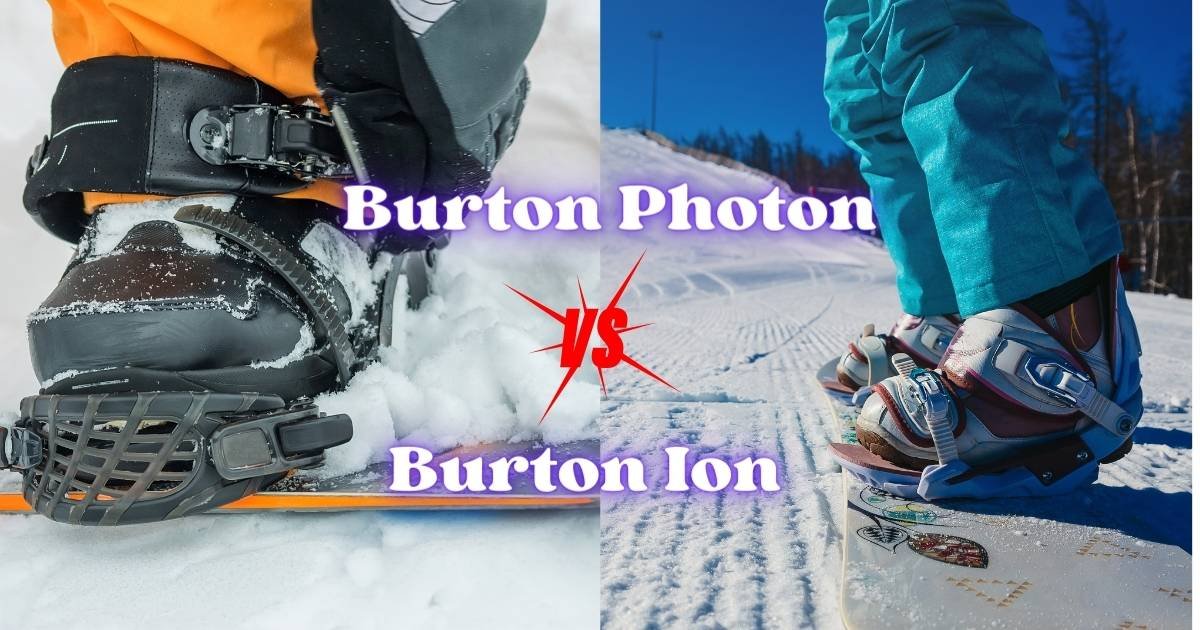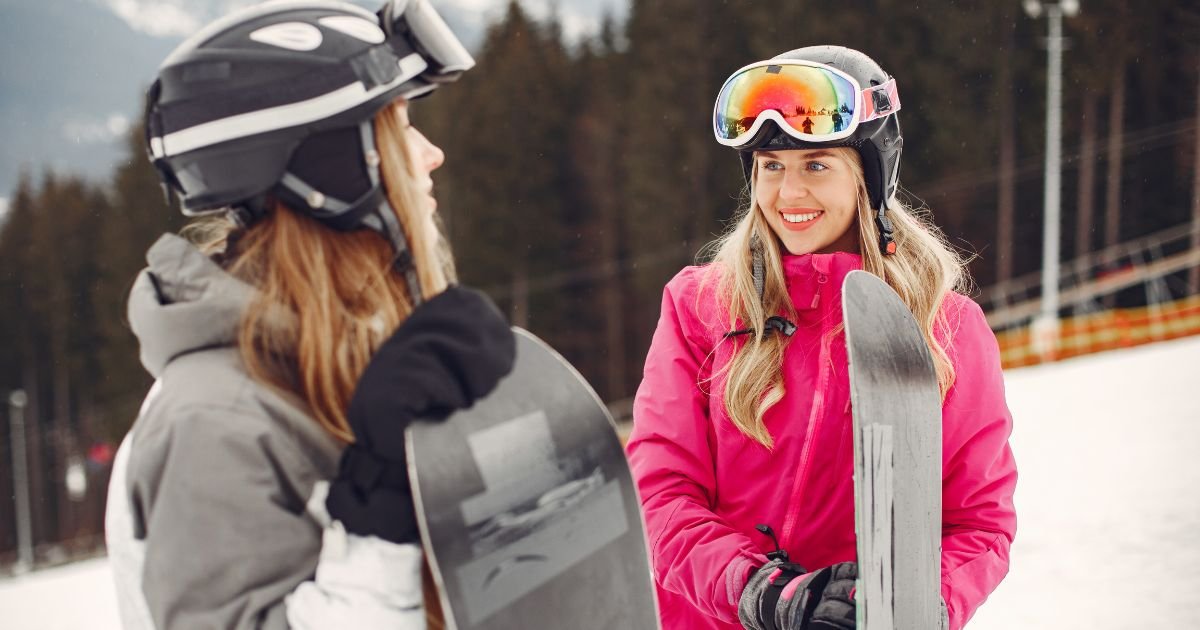What Size Snowboard Should I Ride? The Actual Size You Need

What size snowboard should I ride, is the most familiar but crucial query among new snowboarders. But here’s the thing: a snowboard’s size greatly determines your performance during the game.
It does not matter if you are a newbie or a pro, getting your board size accurate should be the first goal for an exceptional riding experience.
To answer this significant snowboarding question, you must understand the factors that can influence this decision.
Preferably, your physical features, like your weight, height, and shoe size, will determine the size of the snowboard to ride.
Your riding styles, the kind of terrain you glide on, and your skill level all join to determine the board size to ride.
A size chart can also be helpful, so read on to know how to piece these factors together.
Why Snowboard Size Matters?

Snowboarders obsess about the sizes of their boards because the wrong-sized board can mar your riding skills and performance. These boards are used based on the style you love to ride on them.
Using a short board on deep snow terrain can only obstruct your game and performance because they are made for maneuvering and sensitivity.
Meanwhile, a longer snowboard offers extra balance, especially when gliding down on speed in deep snow.
With this in mind, let’s look at what your physical features have to do with your board length.
Relationship between you and your snowboard length
The most important part of your physical attributes when it comes to snowboarding is your height, weight, and boot size.
That’s just why boards are unique to individuals.
Getting the perfect-sized snowboard requires knowing what you weigh and how tall or short you are.
Knowing your Body Mass Index (BMI) helps you to capture your accurate weight and height.
The newest way to get a board size is by using a size chart. I assume you already know what you weigh, so here’s a chart to help you.
| Rider’s height in Inches | Rider’s weight in Centimeter | Rider’s weight in LB | Snowboard size |
| 4’10” | 147 | 110 -120 | 128 – 136 |
| 5’ | 152 | 115 -130 | 133 – 141 |
| 5’2” | 158 | 125 – 135 | 138 – 147 |
| 5’4” | 163 | 135 – 145 | 145 – 152 |
| 5’6” | 168 | 140 – 155 | 149 – 157 |
| 5’8” | 173 | 150 – 165 | 154 – 163 |
| 5’10” | 178 | 160 – 175 | 159 – 167 |
| 6’ | 183 | 170 – 185 | 160+ |
| 6’2” | 188 | 180 – 195 | 160+ |
Snowboard Industry Sizing Standards: The Recommendations
Here’s another thing you should know. Measurement in size helps these manufacturers produce accurate snowboard sizes for every weight and height.
Though sizes may differ among manufacturers, it is one of the key factors in manufacturing snowboards.
Let’s see some variations in sizing recommendations among snowboard manufacturers.
I aim to help you get your sizing right and enjoy your game; therefore, I have listed the top three snowboard brands with their sizing variations.
Now you can choose from the best in the business.
Burton sizing
The sizing recommendations from Burton for a great snowboard experience are divided according to your experience level.
This includes sizing for beginners, intermediate, and advanced snowboarders. It varies from the size recommendation of the next manufacturer.
Never Summer sizing
Never Summer recommends knowing your shoe size, height, and weight. It shows how they determine the perfect snowboard sizing for a seamless game.
YES. Snowboard sizing
YES. Recommends getting the surface area of the board right. The brand thinks this matters more than the length.
If the surface area of the board matches your weight, you have found your perfect board size.
What Size Snowboard Should I Get
I bet you know that your preferred terrain during snowboarding contributes to choosing the right board size.
Let’s see some options.
Powder
Riding the powder gives a feeling of being light and almost flying. As exciting as this ride can be, I recommend beginners gather some experience before trying this terrain.
The powder snowboards are designed to float in ungroomed and deep powder snow terrain. They are perfect for riding in between trees and aid graceful maneuverings.
Boards with rocker profiles have longer tails and wider noses. This feature allows the board’s nose to stay above the depth of powdery snow while riding.
Groomed slopes
Many snowboarders prefer the groomed slope where the terrain has been groomed with snow and made smooth.
The right snowboard for this terrain is built for stability and versatility with balance pop.
Parks
Choosing a snowboard for park rides should consider these features: profiles, bindings, board length, and flex rating.
Board sizes for different terrains
The snowboarding game is so exceptional that most times, there is no one-size-fits-all all-board, even in terrains, due to everyone having personal goals and riding styles.
Sizes are also specific to manufacturing companies, but with my experience on various boards, I recommend trying these sizes in the table to help you make informed decisions on what will work best for you.
| Terrains | Snowboard type | Snowboard sizes |
| Parks | Freestyle snowboards. They mostly come in short forms. | 148 – 164cm |
| Versatile terrain | Freeride boards with long sizes and stiff flex. | 162 – 166cm |
| Powder | All mountain snowboarding. They can perform excellently on other terrains if you can use them. | 145 – 157cm |
| Groomed | All mountain snowboard. They can perform excellently on other terrains if you can use them. | 149 – 160cm |
| Backcountry | Wider and longer-nosed boards with tapered narrow tails. | 159 – 163cm |
Factors that determine ideal snowboard size
With my experience in this game, I have concluded that before you perfect your game on the board, you need to connect all the dots that make up the game.
We’ve connected the terrains and other parts that affect your snowboard sizing. We have some more to connect; let’s get to them.
Skill level
The snowboarding game skill level is categorized by experience: beginner, intermediate, advanced, and expert skill level.
The beginner level starts the day you decide to mount the board and ride a few distances in practice.
As a beginner, you need stability on the board to help you build balance. More on that, a beginner’s board does not need to catch an edge every time, so be conscious of the camber profile of the board you wish to purchase.
I will recommend you stick to a hybrid camber.
Height
Determining the right snowboard size with your height has been a thing right before the charts surfaced.
If you wonder how you can go around this, it’s quite simple.
Stand the board straight on the ground in front of you, the right size of a board should be tilting between your collarbone and towards your forehead.
Weight
Manufacturers make snowboards with weight ranges for every human weight. Before you purchase that board, check what you weigh. Your weight should score within the weight range the manufacturer said. I’m convinced you will enjoy your game if you get this right.
Gender
Colors may differentiate the female boards from the male boards in a snowboard shop, but that’s not all you need to know.
Female boards are more narrow with softer flex than the male boards.
Softer flexes help to avoid knee injuries while riding. Male boards are about 152cm lengthwise to ensure their big-sized bootstrap and help dispense more energy for navigation and turning.
Common errors to avoid while choosing snowboard size
Imagine waiting the whole time for winter to set in properly, and then you excitedly find your way to the shop to get your board but end up choosing the wrong one.
The frustration that comes with snowboarding with the wrong size of board can be extreme. It takes away all the thrill you’ve built up over time.
I’ve once been in that situation, and I can tell you for free that it’s not a happy place. I learned from my mistakes, and I do not want you to go down that path either.
So here are some of the mistakes to avoid when you’re choosing a snowboard.
Choosing the wrong board flex and profile
A snowboard’s flex is the flexibility extent a board can take while in action. The flex determines how far a board can bend when you apply force.
Understand that there are stiffer boards and softer boards; these boards are built for and serve different purposes.
The profile of a snowboard is summed up as the curves and shape the board was manufactured in when you view it from the side.
If you combine the flex and profile of a board, you can determine the right size for your ride.
Choosing the wrong width
Before you select that board, measure the width with the size of your boots. A narrow board can not balance with a boot wider than it.
It may lead to heel drag.
Choosing the wrong board length
Board lengths matter a lot, especially for beginners. I can’t emphasize this enough.
Short boards are highly beginner-friendly, but when they become shorter than they should be, it becomes a problem. Very short boards will cause you to fall because you won’t be in control.
The same goes for longboards. When it’s too long, you will put in extra effort and energy to navigate it and ride successfully.
Attention
Since board sizing has been one of the most challenging parts of snowboarding.
Getting a question like what snowboard size should i ride isn’t new among learners and deserves a thorough explanation as I did in this article.
Say you will be joining snowboarders next winter season, consider taking board sizes seriously.
As I have listed, many factors are involved in getting your board size right.
You’ve decided on the terrain you’d ride and checked your weight; it shows you’re on the right path.
Take your time to tick all the board sizing boxes before you visit your favorite brand’s snowboard shop.






